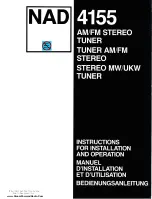
NEO-M9N - Integration manual
The UBX-LOG-FINDTIME message can be used to search a log for the index of the first entry less
than or equal to the given time. This index can then be used with the UBX-LOG-RETRIEVE message
to provide timebased retrieval of log entries.
3.4.6 Command message acknowledgment
Some log operations may take a long time to execute because of the time taken to write to flash
memory. The time for some operations may be unpredictable since the number and timing of
flash operations may vary. In order to allow host software to synchronize to these delays logging
messages will always produce a response. This will be UBX-ACK-NAK in case of error, otherwise UBX-
ACK-ACK unless there is some other defined response to the message.
It is possible to send a small number of logging commands without waiting for acknowledgment,
since there is a command queue, but this risks confusion between the acknowledgments for the
commands. Also a command queue overflow would result in commands being lost.
3.5 Data batching
3.5.1 Introduction
The data batching feature allows position fixes to be stored in the RAM of the receiver to be retrieved
later in one batch. Batching of position fixes happens independently of the host system, and can
continue while the host is powered down.
lists all the batching-related messages:
Message
Description
UBX-MON-BATCH
Provides information about the buffer fill level and dropped data due to overrun
UBX-LOG-RETRIEVEBATCH
Starts the batch retrieval process
UBX-LOG-BATCH
A batch entry returned by the receiver
Table 11: Batching-related messages
3.5.2 Setting up the data batching
Data batching is disabled per default and it has to be configured before use via the CFG-BATCH-*
configuration group.
The feature must be enabled and the buffer size must be set to greater than 0. It is possible to set
up a PIO as a flag that indicates when the buffer is close to filling up. The fill level when this PIO is
asserted can be set by the user separately from the buffer size. The notification fill level must not
be larger than the buffer size.
If the host does not retrieve the batched fixes before the buffer fills up the oldest fix will be dropped
and replaced with the newest.
The RAM available in the chip limits the size of the buffer. To make the best use of the available
space users can select what data they want to batch. When batching is enabled a basic set of data
is stored and the configuration flags EXTRAPVT and EXTRAODO can be used to store more detailed
information about the position fixes. Doing so reduces the number of fixes that can be batched.
The receiver will reject configuration if it cannot allocate the required buffer memory. To ensure
robust operation of the receiver the limits in
EXTRAPVT
EXTRAODO
Maximum number of epochs
0
0
300
UBX-19014286 - R07
3 Receiver functionality
Page 22 of 95
C1-Public
















































